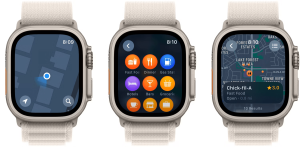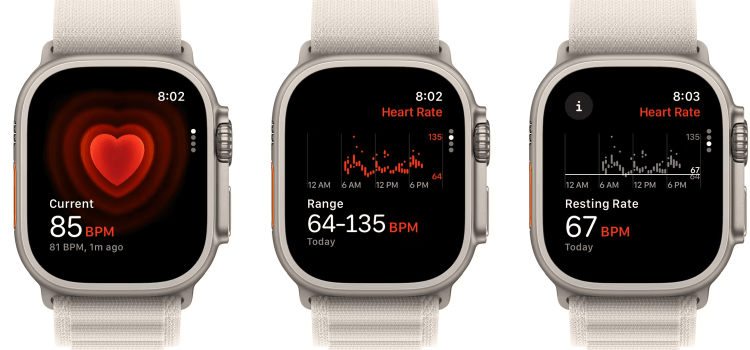
The Future of Apple Watch: How Apple Overcame the Sales Ban
Introduction
Hi, I’m Alex, a technology journalist and a long-time Apple fan. I’ve been following the development of the Apple Watch since it was first announced in 2014. I was fascinated by the idea of a wearable device that could monitor my health, fitness, and notifications, while also being stylish and customizable.
But I was also aware of the challenges that Apple faced in bringing this product to the market. One of the biggest hurdles was the patent dispute with Masimo, a medical technology company that claimed that Apple infringed on its patents related to blood oxygen monitoring. This resulted in a sales ban on the Apple Watch Series 9 and Apple Watch Ultra 2 in the US, which was upheld by the ITC and the White House in late 2023.
In this article, I will explain how Apple managed to overcome this obstacle and resume the sales of its latest smartwatches in the US. I will also explore the potential and challenges of the Apple Watch as a product, and what we can expect from its future iterations.
How Apple Overcame the Sales Ban
The sales ban on the Apple Watch Series 9 and Apple Watch Ultra 2 was a major setback for Apple, as these models featured the blood oxygen sensor, a key selling point that differentiated them from the previous generations. The blood oxygen sensor measures the oxygen saturation of the blood, which can indicate the health of the respiratory and circulatory systems. This feature was especially relevant in the context of the COVID-19 pandemic, as low blood oxygen levels can be a sign of infection.
Apple argued that the sales ban would harm the public interest, as it would deprive millions of Americans of access to a potentially life-saving device. Apple also claimed that it did not infringe on Masimo’s patents, as it used a different technology and design for its blood oxygen sensor. Apple appealed the ITC’s ruling and requested a stay of the ban until the appeal was resolved.

However, the ITC denied Apple’s request, and the ban was set to take effect on December 26, 2023. Apple then took a preemptive measure and pulled the affected models from its online store and retail outlets a few days before the deadline. Apple also pursued other legal and technical options to ensure that the Apple Watch would be available to customers in the US as soon as possible.
One of these options was to seek a presidential veto of the ITC’s ruling, which was possible during the 60-day Presidential Review Period that ended on December 25, 2023. Apple hoped that President Biden would intervene and overturn the ban, as he had the authority to do so for policy reasons. Apple argued that the ban would undermine the US leadership in innovation and harm the competitiveness of the US economy.
Apple’s efforts paid off, as President Biden announced on December 24, 2023, that he would veto the ITC’s ruling and lift the ban on the Apple Watch Series 9 and Apple Watch Ultra 2. President Biden cited the public health benefits of the blood oxygen sensor, as well as the importance of supporting the US technology sector, as the main reasons for his decision. He also noted that the patent dispute between Apple and Masimo was still ongoing in the courts, and that the ITC’s ruling was not the final word on the matter.
Apple welcomed President Biden’s decision and thanked him for his support. Apple also resumed the sales of its latest smartwatches in the US on December 26, 2023, and offered free shipping and extended returns for customers who had to wait for their orders. Apple also said that it would continue to defend its innovation and intellectual property rights in the courts, and that it was confident that it would prevail in the patent litigation with Masimo.
The Potential and Challenges of the Apple Watch
The sales ban on the Apple Watch Series 9 and Apple Watch Ultra 2 was a temporary setback for Apple, but it also highlighted the potential and challenges of the Apple Watch as a product. The Apple Watch is not just a smartwatch, but a personal health and wellness device that can provide valuable insights and feedback to users. The blood oxygen sensor is one of the many features that make the Apple Watch a powerful tool for monitoring and improving one’s health.

Some of the other features that the Apple Watch offers include:
- Heart rate sensor: Measures the heart rate and alerts the user of any irregularities, such as atrial fibrillation or high or low heart rate.
- ECG sensor: Records an electrocardiogram, which can detect signs of heart conditions, such as arrhythmia or coronary artery disease.
- Fall detection: Detects when the user falls and automatically calls emergency services if the user is unresponsive.
- Noise app: Measures the ambient sound levels and warns the user of any potential hearing damage.
- Sleep app: Tracks the user’s sleep patterns and provides tips and suggestions for improving sleep quality.
- Fitness app: Tracks the user’s activity, calories, and workouts, and provides personalized goals and challenges.
- Handwashing app: Detects when the user is washing their hands and provides a countdown timer and haptic feedback to ensure proper hygiene.
These features demonstrate the potential of the Apple Watch to improve the user’s health and wellness, and to prevent or detect serious health issues. The Apple Watch can also integrate with other health and fitness apps and devices, such as blood pressure monitors, glucose meters, and smart scales, to provide a comprehensive overview of the user’s health data. The Apple Watch can also share this data with the user’s doctor or health care provider, with the user’s consent, to facilitate diagnosis and treatment.
However, the Apple Watch also faces some challenges in fulfilling its potential as a health and wellness device. One of these challenges is the accuracy and reliability of the sensors and algorithms that power the health and fitness features. The Apple Watch is not a medical device, and its measurements and readings are not intended to replace professional medical advice or diagnosis. The Apple Watch may not work well for everyone, depending on factors such as skin tone, tattoos, wrist size, and movement. The Apple Watch may also produce false positives or negatives, or miss some important signals, that could affect the user’s health outcomes.
Another challenge that the Apple Watch faces is the privacy and security of the user’s health data. The Apple Watch collects and stores a lot of sensitive and personal information about the user’s health and wellness, which could be vulnerable to hacking, theft, or misuse. The Apple Watch also shares this data with the user’s iPhone and iCloud account, and potentially with other apps and services, which could expose the user to more risks. The user has to trust that Apple and its partners will protect the user’s health data and respect the user’s privacy preferences.
A third challenge that the Apple Watch faces is the cost and accessibility of the device. The Apple Watch is not a cheap product, especially the latest models that feature the blood oxygen sensor. The Apple Watch Series 9 starts at $399, and the Apple Watch Ultra 2 starts at $499. The Apple Watch also requires an iPhone to work, which adds to the expense. The Apple Watch may not be affordable or available for everyone who could benefit from its health and wellness features, especially in developing countries or low-income communities.
The Future of the Apple Watch
The Apple Watch has come a long way since its debut in 2014, and it has overcome many obstacles and challenges along the way. The sales ban on the Apple Watch Series 9 and Apple Watch Ultra 2 was one of the biggest hurdles that Apple faced, but it also showed how much the Apple Watch has grown and evolved as a product. The Apple Watch is not just a smartwatch, but a personal health and wellness device that can make a positive difference in the user’s life.
The future of the Apple Watch is bright and promising, as Apple continues to innovate and improve the device. Apple is likely to introduce new features and sensors that can monitor and enhance the user’s health and wellness, such as blood pressure, body temperature, hydration, stress, and mood. Apple is also likely to improve the accuracy and reliability of the existing features and sensors, and to address the privacy and security concerns of the user’s health data. Apple is also likely to make the Apple Watch more affordable and accessible, and to expand its compatibility and integration with other devices and platforms.
The Apple Watch is not perfect, and it still has some limitations and challenges to overcome. But it is also a remarkable product that has the potential to change the way we think about and manage our health and wellness. The Apple Watch is more than a watch, it is a companion that can help us live healthier and happier lives.










